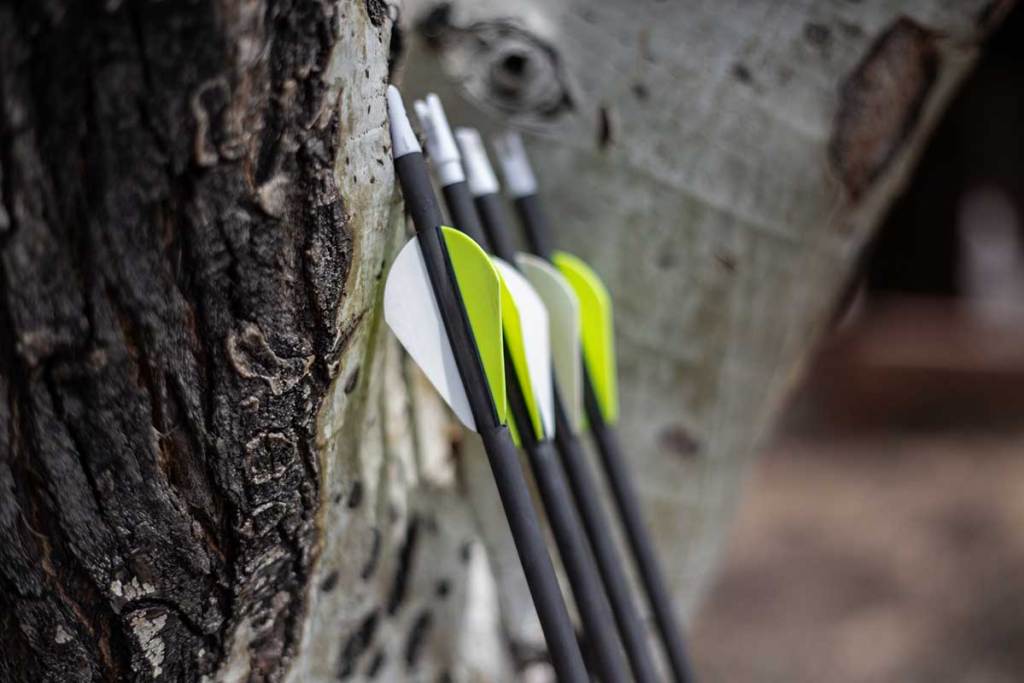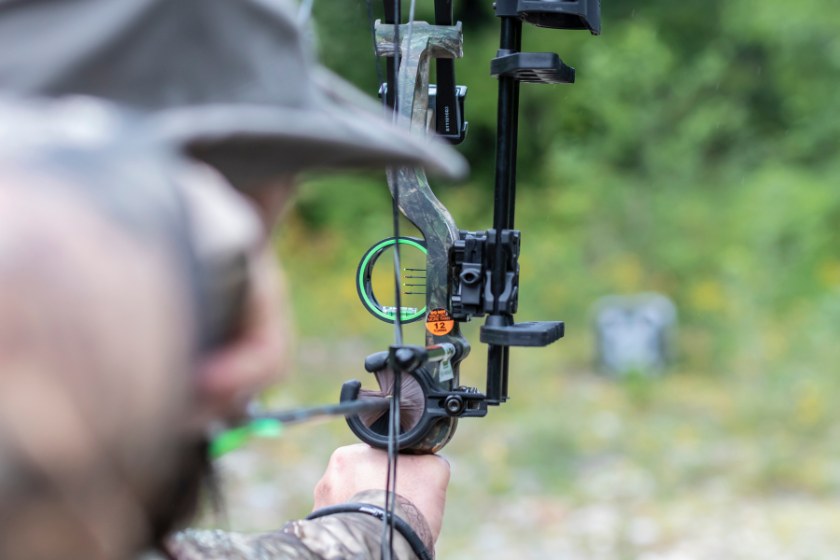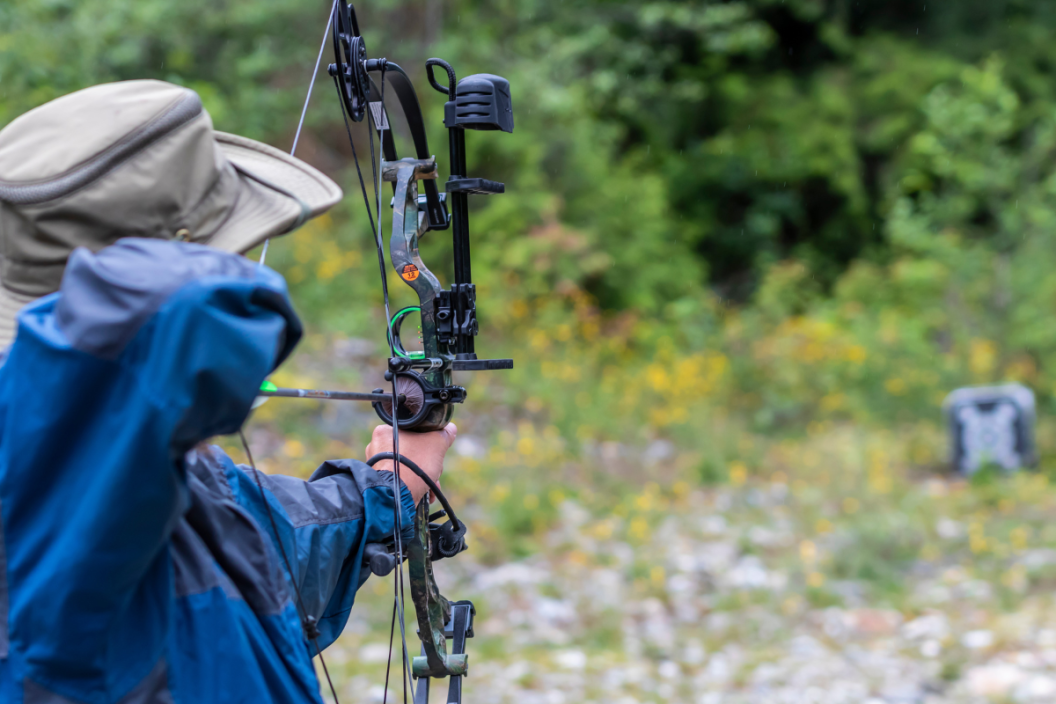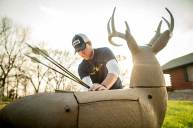Shooting a bow takes skill and practice, but many hunters seem to put off practicing their shot until just before the season. Training should be at the forefront of your mind throughout the off-season if you want to be confident in your technique and ability. Every hunter might have a different idea of what bow practice looks like, but there are some primary areas to consider, such as frequency, type of practice, and difficulty level. This year, incorporate these into a documented schedule to prepare for the money shot, and please, don't won't wait until the last minute to prepare for the archery season. Get an early start and have a plan. To do that, let's dive deeper into your practice plan to help lead to bowhunting success.
1. Work With What You've Got

Andrea Kessler/Getty
Scheduling your practice will vary from person to person. Not every person has an hour or more to practice every day. Every bowhunter needs to find time in their schedule to commit to their shot to help ensure that their shot is ready for the upcoming season. That means not waiting until a week or two before the opening day of the archery season.
Not everyone has an archery range in their backyard or easy access to a public archery range, but there are ways to get around this. Make sure you do everything in your power to get the most practice you can with the bit of time you have available.
Suppose you can access an archery range with all the bells and whistles. Great! If you can only shoot at about ten yards at home but get to a bigger archery range every week or two, that is better than nothing. Get creative and research ways that you can improve your shot with what you have available to you.
2. Shoot as Often as Possible

Dvoinik via Getty Images
The frequency of each bowhunter's practice will depend on the individual and the amount of time they have available. In this case, more is better. The more you practice your shot, the better your shot will become. It's like compounding interest. At first, it won't seem like you are getting much out of practice, but over time, the return on your investment will be highly noticeable.
Even if the frequency is only blank baling in the backyard at a really close distance, it is better than nothing. Going through your process and feeling out your form will be super beneficial when you can get to a bigger archery range to practice from longer distances. Your pre-shot routine is the most critical aspect of archery, so being able to practice even at a short distance can be very beneficial.
If you do have the ability to shoot at home, it is highly recommended to try for at least 30 minutes a day. Don't rush practice to try and squeeze it in. Taking your time and practicing methodically is vital—focus on quality over quantity when it comes to training. Practicing for multiple hours in a day may not be the best idea. If you wear yourself out, you could develop bad habits. After you get pretty tired, don't push it too much. Get your quality shots in, and then call it a day. Ideally, it will only take one shot when you are in the stand.
One quick exercise to put pressure on yourself is to take one shot at a time and spread those out over the day. If you can, take one shot in the morning before work, then again after getting home, and then every hour or so after that until dark. This makes you focus on one shot at a time, and is closer to that one chance you get to make a kill shot on an animal.
3. Change Up the Type of Practice & Difficulty

Stefan Malloch via Getty Images
While spending adequate time practicing your shot and sharpening your skills are critical, the type of practice is just as important. Different shooting drills and practice sessions can help sharpen various aspects of your shot. These will vary based on your equipment and your capability to shoot.
An archer can carry out many different types of practice, ranging from blank bale practice to raising your heart rate or shooting from elevation. Remember the hunting you will engage in and what situations might present themselves. Make sure your practice mirrors or exceeds the limits you may encounter in the field.
Every bowhunter has their max distance they will not shoot past in the field. If your skill limits your max distance and not your equipment, then don't be afraid to push yourself while practicing. It will make shooting at your max field distance easier during a hunt, and you will be more accurate over time.
If you plan to shoot from a treestand or another elevated position, incorporate that into your practice. It is very different to shoot from the ground versus shooting from a high position, fifteen or more feet in the air.
It would help if you also considered the adrenaline rush you will feel when that animal walks in front of you. To mimic this in practice, do some jumping jacks, squats, or burpees to get your heart elevated and then attempt to make an accurate shot. This great exercise will help your focus and concentration in big situations.
As you progress into different drills, you will notice that an increased distance or elevating your heart rate naturally makes shooting more difficult. That is to your benefit in the long run. Taking more difficult shots in practice will make your average field shots feel simple, giving you great confidence in your shot when the time comes to harvest an animal.
There are many, many different ways that you can practice. If you are getting bored and want to spice it up, look in to what some of the best archery hunters in the world do to practice. You will be surprised at what you can find.
4. Make Your Practice Schedule (and Stick to It)

Hiraman via Getty Images
Simply setting up a practice schedule can be very useful to keep you in prime condition and ready for the beginning of bow season. While setting a practice schedule isn't challenging, it's sticking to it that really matters.
As I mentioned, you can always research some practice regiments that the top archers in the world use, but be sure that the practice schedule you go with works for you. Remember the time you have, your facilities, and your intended goal. I've found it's super helpful to use a blank calendar (or at least one that has only your important dates and reminders) to map out your practice schedule. Doing this will help you follow the plan over time.
It is recommended to start vigorously practicing at least two to three months before the start of the hunting season you intend on participating in. Early on, focus on form and getting your routine locked in. Then work on your precision with good form and repeatability. As the season gets closer and closer, expand your distances and make your practice sessions more realistic to the shots you will take out in the field.
Life can be busy for most hunters, but making time to practice should be a high priority. Don't slack on practice and let yourself down when you feel tense in the field, causing you to miss a shot on an animal. Put in the work to be prepared to execute your perfect shot when the time comes.




